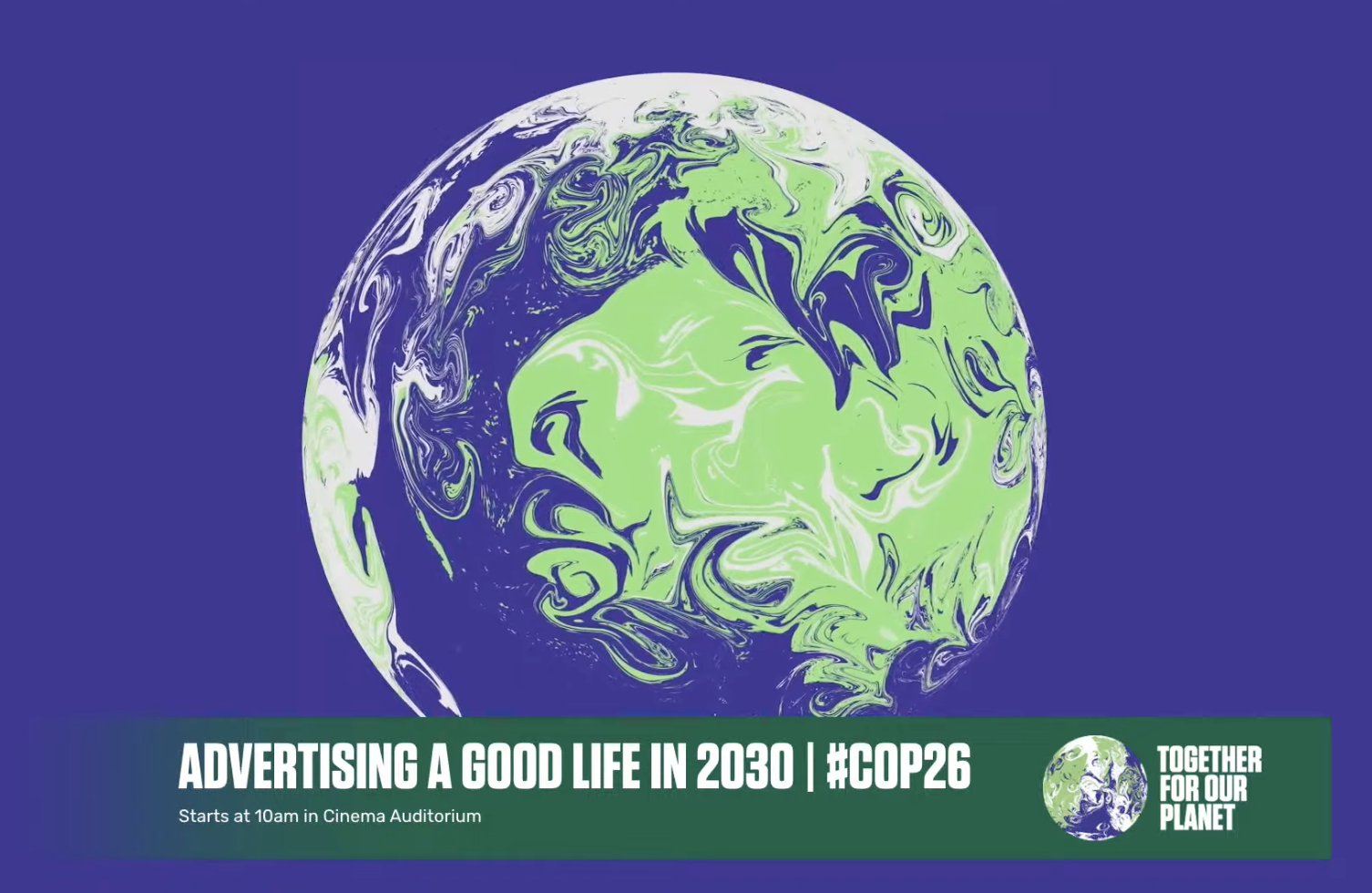Our News
COP26 Green Zone: Advertising A Good Life in 2030

COP26 was characterised by sectors, organisations, individuals and countries who were present, and those who were not. To my surprise, the advertising industry was represented on the morning of the final day in the Green Zone. The theme of the presentation, by Purpose Disruptors, was Advertising a Good Life in 2030, they began by setting the context for advertising in human societies through the ages before bringing the lens to the recent phenomenon of consumerism. The arc of this story gave a clear description of how advertising has been used through history and how people in the industry can use their work to shift from “[being] a service industry, to an industry in service of life.” Over the course of the 20th Century, advertising became the greatest tool of capitalism to make consumers of us all. Driving consumption of stuff and creating new markets as a means to grow the economy and create wealth. One standout statement from the documentary presented by Purpose Disruptors is “the fact that a single automotive campaign can far outweigh the collective total industry carbon footprint.” This really brought to the fore, the power of words and images in shaping cultural norms and our collective impact on the world around us.
The documentary presented the issue that visions of what 2030 might look like fall to one of two sides – dystopian visions that diminish people’s motivation to find a better way of doing things, and utopian visions that feel unbelievable and fail to show people how we can get there. The project presented different advertising agencies with this problem and briefed them to produce an advert for A Good Life in 2030. For me, this reflects the themes of Carbon Literacy in its call to reframe the message – transforming our climate conversations from those of loss, sacrifice and depletion, to those of health, happiness and inclusion. Carbon Literacy helps learners to imagine a better world and a better way of life, understanding that the changes we need to make won’t make a world that is less bad than it might otherwise be, but a world that is better than what we have now. The power of advertising to realise this vision lies in its ability to fix the image problem than 2030 (and by connection 2050, 2100, etc) has. “The abilities of those in advertising are not in question, we are excellent at driving demand and creating desire”, presenters identified the responsibility for industry professionals to drive demand and create desire for a 2030 that meets scientifically determined targets to keep warming within 1.5C and reduce greenhouse gas emissions to zero to 2050 and beyond.
For those outside of the advertising industry, the messaging of this presentation remains valuable. What is needed in the immediate term is a reframing of the issues as they relate to climate change and to individuals. Climate change impacts us all, and it impacts us all differently – no matter who we are, where we work, what we do and how we live. The way in which messaging about the climate and the changes we need to make is framed plays a significant role in how we absorb, interpret and respond to the information itself. As communicators about climate change, we can learn from the folks at Purpose Disruptors an important lesson in how we approach conversations about climate action to bring all those around us onboard with our common goal.
If you would like to catch up on any of the recorded events from COP26, they have a Youtube channel where most events can be streamed.